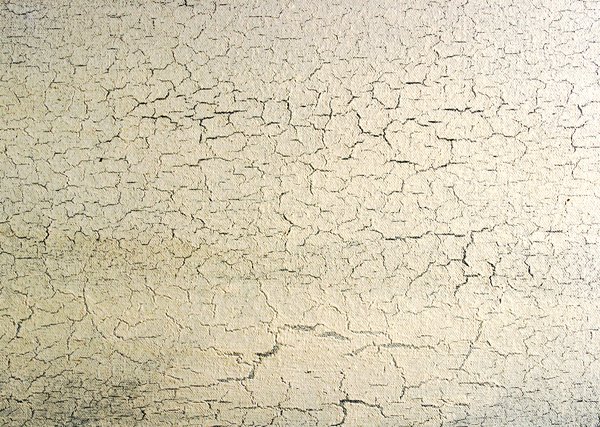Cracked Paint Finish
Posted By admin On 12.12.20For long cracks, make long brushstrokes when applying the top coat of paint. For smaller cracks, I sort of dab the paint on with a small brush. For tiny fractures, you’ll need to use a natural sea sponge to apply the top coat of paint. If this is your first time using crackle paint, you’ll probably want to practice a little first. Apply the crackle finish two ways with a natural sea sponge (which gives you small, random hairline cracks) or with a paintbrush (which creates much bigger cracks that generally flow in the direction you brush). Note: If you choose to use a brush on a wall, you're going to get a workout. Starting in a corner, apply the top coat. You can shortcut that journey with contrasting shades of flat latex paint and a special medium that comes out of the can as a milky liquid, goes on clear, and shrinks and cracks the paint color layered on top of it, revealing glimpses of the base shade. Crackle medium ages furniture right before your eyes. May 03, 2013 How to paint over cracked paint. What I’ve been doing all this time is actually a good idea. That’s not always the case. Oh, yeah, and that picture isn’t of a wood slat ceiling I know. It was really hard to get a good shot of the cracks in the ceiling since it was white paint cracked over off-white paint. Jul 03, 2017 The wife wanted a chipped paint look on the baseboards and trim in a bedroom. Here goes nothing! Check out a viewer who used the technique to refinish some old furniture: https://www. Spray-paint the foam board with gold paint. When dry, spray it with a coat of spray varnish to seal the paint. Lightly sand the sealed paint surface with very fine sandpaper. One application in a single direction works best. Do not overwork the top coat as this may cause the paint to gum up. Within minutes the top coat will begin to crack, letting the base coat show through. If you want a more pronounced effect, we suggest using a brush. For a finely cracked delicate look, use a roller.
Safety Tips for Operating a Generator
Dusk-to-Dawn Lantern Provides All-Night-Ambience
How to Rake Leaves Faster with a Tarp and Wooden Dowels
JUST RELEASED: Metal Roofing Buyers’ Guide!
These Deck Screws Help You Finish the Job Faster
To give furniture an antique crackle decorative finish:
- Paint the furniture black and allow to dry to act as a base coat.
- Apply a coat of water based yellow or white wood glue (we use a cup of Titebond) to all surfaces.
- While the glue is still tacky, paint on a coat of lighter colored latex paint.
- Allow the paint and glue to dry thoroughly before using.
As the glue and paint dry, it will give the furniture a crazed antique look.
Watch this video to find out more.
Further Information
- Alternative Wall Surfaces and Decorative Finishes (article)
- Faux Textured Wall Surfaces and Finishes (article)
- Faux Graining Finishing Techniques for a Painted Mantel (video)
- Faux Marbleizing Finishing Technique for Columns (video)
VIDEO TRANSCRIPT
The first step to creating a crackle finish is giving the piece of furniture an undercoat. This should be a flat paint, preferably dark in color, since it will show through the crackle to give the finish depth.
Once the base coat is completely dry, apply a thin coat of white glue or wood glue to the entire piece with a brush. It won’t flow like paint, but do your best to spread it as evenly as possible.
When the glue has dried to the point where it’s a little tacky but not completely dry, you can begin applying the top coat of paint which should be latex. Lighter colors will contrast well with the dark base coat. The paint will have to be applied slightly thick to cover the glue.
Once the entire piece is coated, you simply wait for the glue to work its magic. As it dries the topcoat will separate in a random pattern, revealing the base coat beneath—giving your furniture a cool new look.
The Right Painting Tools for the Job
4 Tips for Painting Your Home’s Exterior
4 Quick, Affordable Ways to Boost Your Home’s Curb Appeal
4 Staging Tips Before Renting Your Home

Bypass the flea market and go straight to a faux-aged finish
Cracking Paint Finish
Vintage-furniture hounds spend years tracking down painted pieces that have just the right patina, its cracked layers of color just oozing with charm. You can shortcut that journey with contrasting shades of flat latex paint and a special medium that comes out of the can as a milky liquid, goes on clear, and shrinks and cracks the paint color layered on top of it, revealing glimpses of the base shade. Crackle medium ages furniture right before your eyes. Which means you can create your own version of a piece's history, with colors of your choosing, whether you're aging one that's actually old or not.
Paint:Benjamin Moore's Sweet Pea (base coat) and Autumn Purple (top coat)
OTHER VIDEOS
How to Match a Paint Color
Cracked Paint Repair
Tip
Cracked Paint Repair
To artificially age the kitchen island shown here, decorative painter Ingrid Leess started by priming it, then brushing on a coat of flat lime green. The following day, she applied a thick layer of crackle medium, using a clean brush and taking care not to overwork it and dry it out. She let it dry for an hour (the medium must cure for 1 to 4 hours to work), then used a clean, dry brush to add a coat of purple. Soon after, it began to shrink, revealing bits of green—and faux history—beneath. A protective clear coat is an option, but here an unvarnished finish reinforces the worn look.